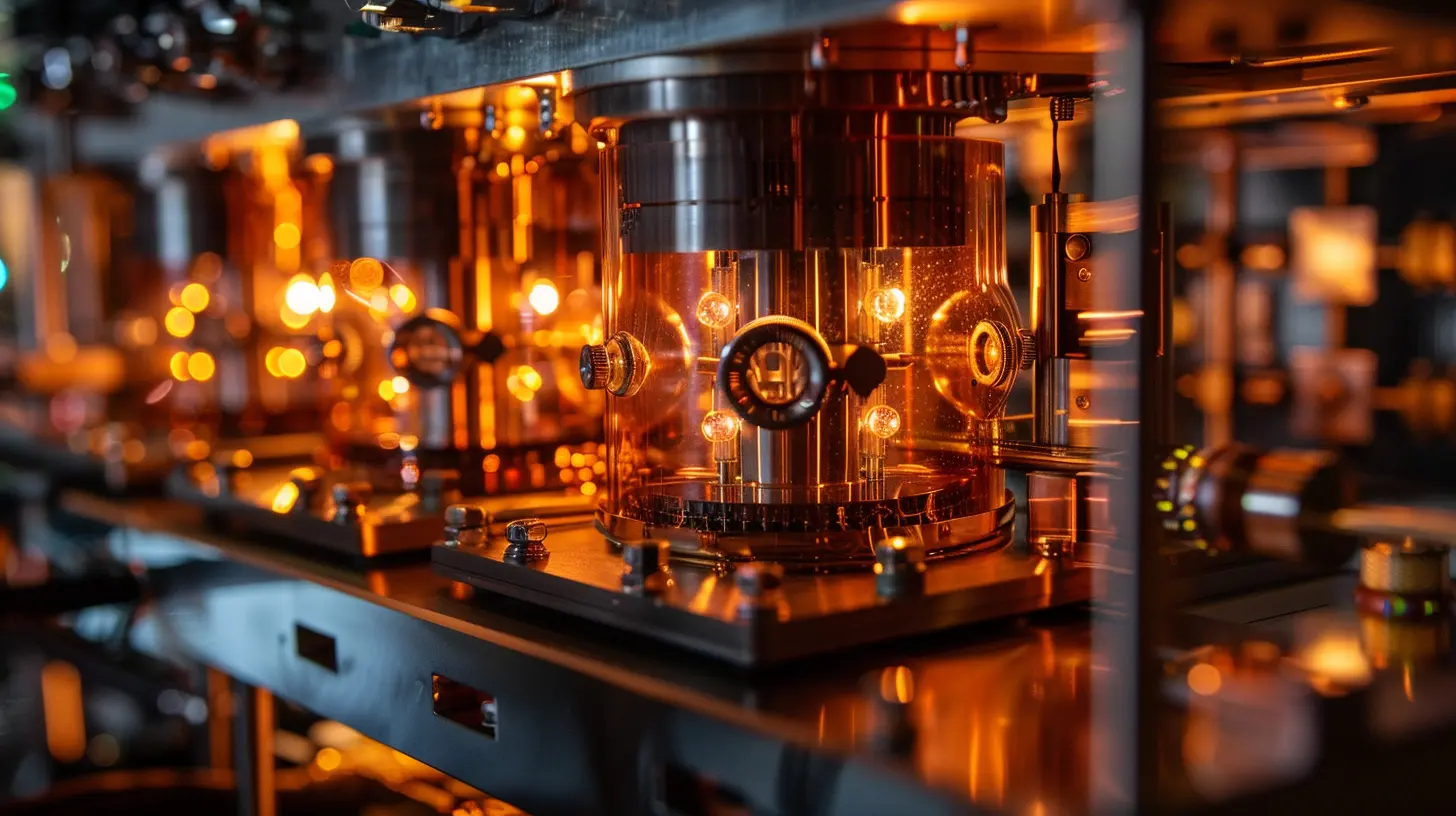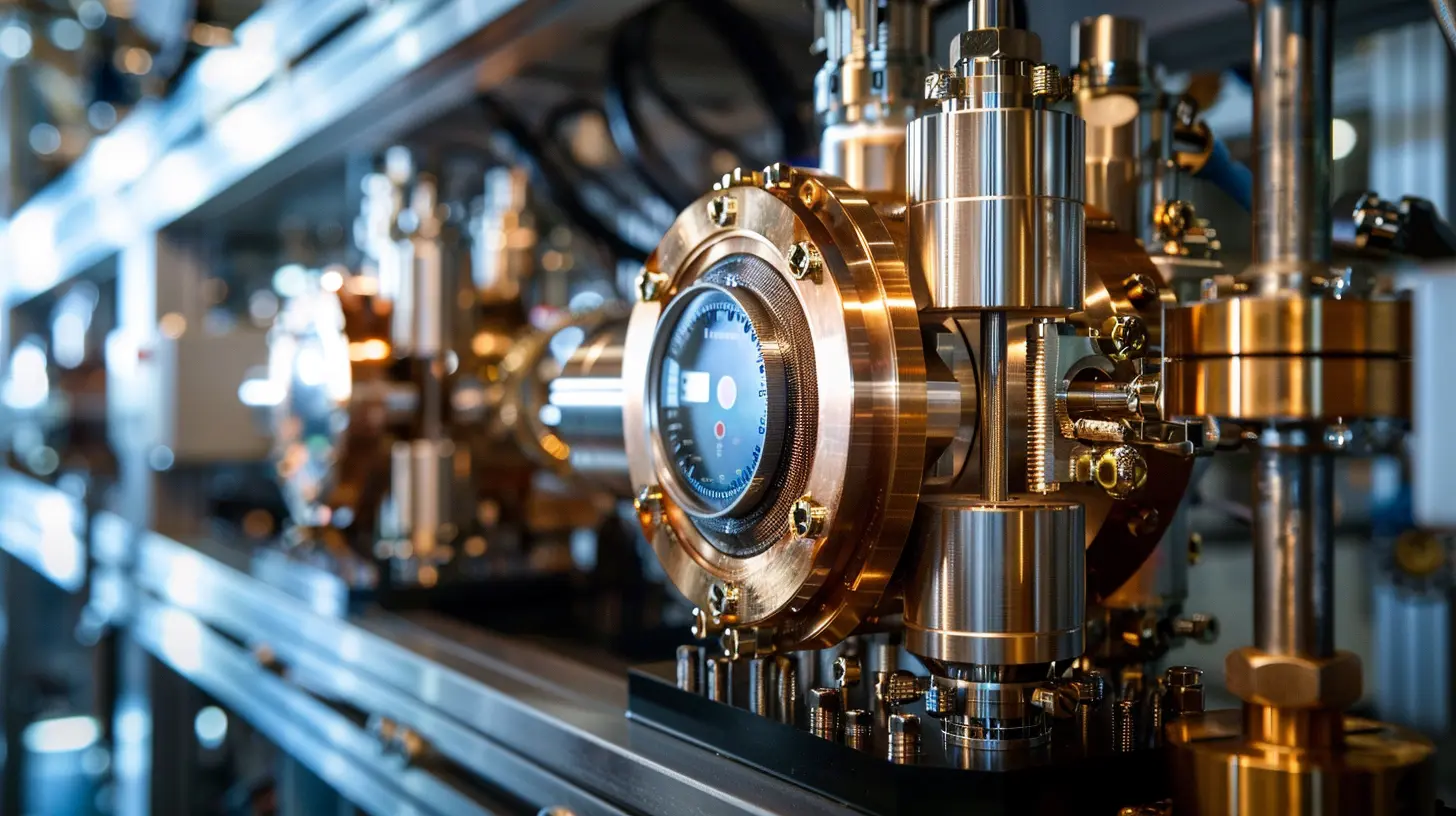Exploring Quantum Annealing: A Specialized Approach to Quantum Computing
21 September 2025
Quantum computing—doesn’t that sound like something pulled straight from a sci-fi movie? Well, it’s real, it’s happening, and it’s rewriting the rules of how we think about computing. One fascinating twist in this high-tech tale is something called quantum annealing, a specialized quantum computing method that’s been making some serious ripples.
Now, I know what you might be thinking: “Annealing? Didn’t we do that in chemistry class?” You’re not wrong, but stick around. In this article, we’re going deep into the wonderfully weird world of quantum annealing—what it is, how it works, and why it might just be the key to solving some of the world’s gnarliest problems.
So grab a cup of coffee (or tea, no judgment here). Let’s dive in and unravel the magic together.
🚀 What the Heck is Quantum Annealing?
Let’s kick things off with a metaphor. Imagine you're trying to find the lowest point in a massive landscape full of hills and valleys. It's pitch black, and you're only allowed to feel your way around. Tough, right? Classical computers would try every possible route to find the deepest valley. But quantum annealing? It uses a super cool trick: it sort of “slides” into the best solution using the magic of quantum physics.Quantum annealing is a problem-solving method that leverages the quirks of quantum mechanics to find the optimal solution in a sea of possibilities. It's particularly good for solving optimization problems—the kind where you’re looking for the best out of many possible configurations.
🧠 How Does Quantum Annealing Actually Work?
Okay, time for a quick refresher on how quantum computers think (spoiler alert: it’s nothing like how your laptop thinks).The Quantum Bit (Qubit)
Classical computers use bits that exist in a state of 0 or 1. Quantum computers, on the other hand, use qubits, which can exist in a superposition—both 0 and 1 at the same time. Wild, huh?Quantum Tunneling
Now, this is where things get juicy. In quantum annealing, qubits are allowed to “tunnel” through energy barriers instead of climbing over them. Imagine trying to get over a mountain range. A classical computer would hike up and over every peak, while quantum annealing lets you tunnel through the mountains straight to the lowest valley.This means that quantum annealing can skip the painful trial-and-error and head straight toward a good (sometimes even the best) solution.
⚙️ The Optimization Angle: Why It Matters
Let’s say you’re trying to schedule hundreds of airline flights, manage a massive supply chain, or even model protein folding in biology. These are combinatorial optimization problems—basically, problems with loads of possible combinations.Trying out each possibility would take a regular computer ages. Quantum annealing, on the other hand, is designed to tackle these exact kinds of problems with style—and speed.
Think of it like solving a Rubik’s Cube, but instead of turning and twisting randomly, your cube sort of reshapes itself into the solved state. Pretty neat, right?
🧪 The Science Behind the Scenes
Quantum annealing is based on a process called adiabatic quantum computation. Fancy term, but let’s simplify it.Imagine you start with a super simple problem (easy enough that you already know the answer). Then, very slowly, you turn this simple problem into the real, complex one you actually want to solve. If you ramp things up gently enough, quantum mechanics promises that your system will evolve into the correct answer.
It’s like gradually turning a flat piece of paper into an origami crane—if you fold it slowly and correctly, you’ll get there in one smooth transition.
🕹️ Quantum Annealing vs. Gate-Based Quantum Computing
Hold up—aren’t all quantum computers the same? Nope. There are multiple flavors of quantum computing, and they’re not all trying to do the same thing.Gate-Based Quantum Computers:
- These are the all-purpose quantum beasts.- Think of them as the quantum version of your everyday PC—flexible but complicated.
Quantum Annealers:
- These are specialists.- They’re the “niche experts” of the quantum world, built specifically for optimization.
- They're simpler to engineer and can work with more qubits (at least for now).
Want to crack a complex logistics problem or find the most efficient network design? That’s where a quantum annealer like D-Wave’s system comes into play.
⚡ Real-World Applications That Are Already Happening
So, we’ve got this cool tech, but what’s it actually doing? Turns out—quite a lot.🎯 Logistics & Supply Chain
Big names like Volkswagen and DHL have already dabbled in quantum annealing to optimize route planning and delivery schedules. We're talking reductions in travel time and cost.🧩 Machine Learning
Quantum annealing can be used to speed up certain aspects of machine learning, especially when it comes to training models and feature selection.🛡️ Cybersecurity
In areas like encryption key distribution and risk analysis, quantum annealing helps handle massive data sets filled with complex variables.💊 Drug Discovery
Pharmaceutical giants are exploring quantum annealing to simulate molecular behavior and speed up drug discovery—a process that usually takes years and billions of dollars.🧱 Limitations (Because Nothing’s Perfect)
Quantum annealing might sound like a magic bullet, but there are caveats.- It’s Specialized: It’s not meant to replace all other computers—just to tackle specific types of optimization problems.
- Temperature Sensitivity: Qubits are super sensitive and need to be cooled to temperatures colder than space.
- Noise: External factors can mess with the system, causing errors.
Also, despite the hype, we’re still figuring out how to harness this power in a consistent, scalable way.
🧭 D-Wave: The Quantum Annealing Heavyweight
No discussion about quantum annealing is complete without talking about D-Wave Systems. These guys have been at the forefront, spearheading the development of practical quantum annealing hardware.Their systems aren’t theoretical—they’re out in the wild, being used by businesses, researchers, and even NASA. Yep, space folks are in on it too.
D-Wave’s latest models boast thousands of qubits, making them the most advanced quantum annealing machines currently available. And the best part? You don’t need a Ph.D. to access them. Through cloud platforms, anyone can start experimenting.
🛠️ Building a Hybrid Future
Here’s a fun twist: the future probably isn’t going to be purely quantum. At least not for a while.We’re more likely to see hybrid systems—classical and quantum computers teaming up like Batman and Robin. Quantum annealers can find optimized solutions quickly, while classical computers handle the rest.
So instead of thinking “quantum vs. classical,” think “quantum + classical.”
🌐 Getting Started with Quantum Annealing
If you’re a coder, a data nerd, or just quantum-curious, there are ways to dip your toes in.Check Out These Tools:
- D-Wave Leap: A cloud-based platform where you can run real quantum annealing problems.- Ocean SDK: D-Wave’s open-source toolkit that lets you build and test problems on simulated and real quantum hardware.
Honestly, you don’t have to be a quantum physicist to start playing around. If you know Python and love challenges, you’re good to go.
🤔 Is Quantum Annealing the Future?
Short answer? It’s part of it.Quantum annealing has carved out its own niche. It’s not going to replace your laptop, but it might just become the go-to tool for some of the world’s most complex challenges.
As research advances and hardware improves, we’ll likely see a boom in real-world applications. It’s like we’re standing at the base of a brand new mountain range, and quantum annealing might be the tunnel that gets us to the summit faster than ever.
🎉 Final Thoughts: Why You Should Care
Quantum annealing isn’t just a buzzword—it’s a real, tangible approach to solving incredibly hard problems way faster than we ever could before.Whether it’s optimizing traffic in a megacity, accelerating medical breakthroughs, or making machine learning smarter, quantum annealing is turning science fiction into science fact. And the coolest part? We’re just getting started.
This is one of those rare tech shifts that redefines what’s possible. So yeah, it might be a little complex, a little nerdy, but it’s also insanely exciting.
So keep an eye on quantum annealing. Who knows—one day, it might just solve a problem you care about.
all images in this post were generated using AI tools
Category:
Quantum ComputingAuthor:

Reese McQuillan
Discussion
rate this article
1 comments
Zina McKellar
This article offers a fascinating glimpse into quantum annealing! I’m intrigued by how this specialized approach can solve complex problems. Can't wait to see its real-world applications unfold in the near future!
September 23, 2025 at 11:57 AM

Reese McQuillan
Thank you for your enthusiasm! I'm glad you found the article intriguing, and I share your excitement about the potential real-world applications of quantum annealing.


